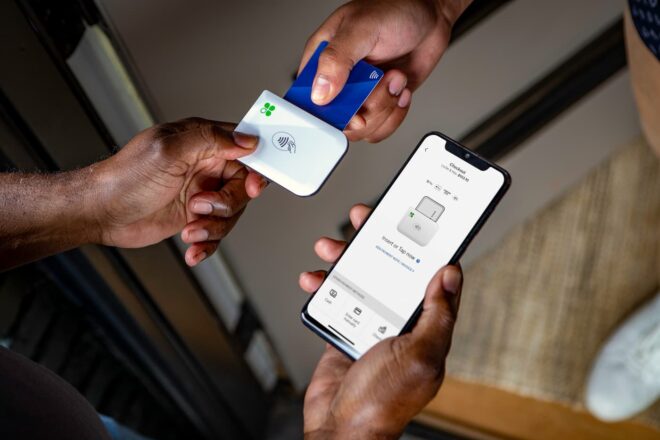What is peer-to-peer transfer? What are the pros and cons?
Editorial Team
3 min read
Technically speaking, every transaction is a peer-to-peer (P2P) transfer. Whether you’re using cash, credit cards or ACH payments, there is a buyer/sender on one side and a seller/receiver on the other.
Though in recent years, the definition of P2P transfers has evolved to describe a new way of exchanging money, goods, and services — one that doesn’t rely on traditional intermediaries like banks or credit card companies.
Today, these payments allow for the transfer of funds between two parties using individual banking accounts or credit cards through an online or mobile P2P service.
If you need to send a friend, family member, or supplier money, you:
- Log into the P2P platform that is compatible for both parties
- Enter a phone number or email address associated with your payee
- Enter the amount of the payment
- Click to confirm amount and receiver details
This seems simple enough. Yet when it comes to P2P transfers, what are the primary advantages and disadvantages — especially when talking about ease of use and security? Let’s take a look.
The pros of P2P transfers
One of the most appealing benefits of P2P transfers is the ease of use and convenience of being able to send money to a friend for a dinner tab or pay a handyman for a service call, for example.
Since all transactions happen electronically without requiring a middleman, P2P systems may carry extremely low transaction fees ranging from 2-3 percent, and some systems may not even charge fees at all.1
Many users also enjoy much lower currency conversion rates, between 75 and 90 percent savings, by bypassing banks and brokers.2
P2P networks may also be more secure in many respects because they’re encrypted and have fraud monitoring capabilities. Some apps and online solutions are even incorporating biometrics and automatic notifications for every transaction.3
P2P networks also offer anonymity. Because very little personally identifiable information is attached to any transaction, this helps minimize the risk of data breaches.
The cons of P2P transfers
P2P networks have tremendous appeal, but they aren’t without their drawbacks. Below are some of the key disadvantages of P2P transactions:
- Refunds are nonexistent (or very hard to initiate). With no middleman involved, it’s difficult to dispute charges after the fact.
- Human errors, like sending money to the wrong recipient, can happen.
- Unpredictability is another downside. Currencies like Bitcoin can easily be converted back to dollars, euros or yen, but there’s no guarantee that you’ll recoup the original value of whatever transaction you initiated with the P2P currency.
- The above also makes accounting much more difficult. Do you enter the original value of the transaction, the new value (after the currency conversion), or the underlying value of the product sold?
Are P2P payment options right for your business?
Offering multiple payment options helps attract new customers and grow sales. Be sure to research the different P2P solutions to see which platforms work best for your business needs. If you would like to discuss your credit card processing capabilities, contact our merchant services team today.
1 “What Are Peer-to-Peer Payments,” Nerdwallet, 31 May 2019
2 “Understand Peer-to-Peer Foreign Currency Exchange,” Investopedia, 2 March 2020
3 “Advantages and Risks of P2P Payments,” Due, 23 June 2017
Related Posts
How and why to improve SEO for your business website
Transforming your home & field service business with mobile payments
Popular Topics
Stay In Touch
Sign up and learn more about Clover.
Thank you for your subscription!
Recent Stories
- Jewelry store supplies and equipment needed for opening day
- How small businesses can use employee discounts to retain staff
- Tips and tricks for opening an outdoor pop-up restaurant
Please share your contact information
to access our premium content.
Thank you for sharing your contact information.
Download Now





